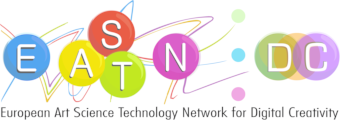This essay approaches the process of making algorithms as a creative discipline and as a treatment. Algorithmic art offers new aspects in audiovisual arts and promotes creative thinking. The development of digital art and computer science is leading to increase mental activity and enhance life, since they combine domains of mathematics, physics and arts. Art therapists are exploring the potentials of computer-generated art, regarding this way of self-expressing as a valid medium for healing. The dimensions of possibilities are beyond imagination. Arts, in general, improve health and well being by stimulating or relaxing people and may be used as a psychotherapy tool for behavioral, emotional and mental health conditions. The methodology of this paper is achieved through a thorough research about creativeness and the potentials of algorithmic arts, looking into the therapeutic methods of art therapy, music therapy, digital art therapy and expressive art therapy, emphasizing in the influences of the emotional world and behavior of the patient. Examples will be presented, using the programming environment Max/Msp, in which algorithms were utilized to make music, sounds, soundscapes and visuals. The aim is to find evidence from a variety of research about how human-computer interaction affects emotions while blending programming with artworks. It is very important to distinguish individuals, depending on the age, the professional level, the experience and the knowledge of art and science. The main categorizations refer to patients who may use algorithmic art for self-healing and patients who need a therapist to guide them. In conclusion, these methods are appropriate for occasions in which persons are concerned about programming and arts. This way of healing is most probably one of the main future treatments, regarding that everything is becoming more related to the digital world.
Back
“Reflections: Bridges between Technology and Culture, Physical and Virtual”
is supported by:






